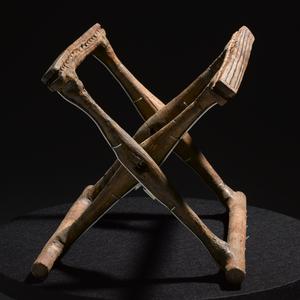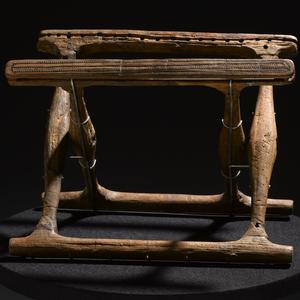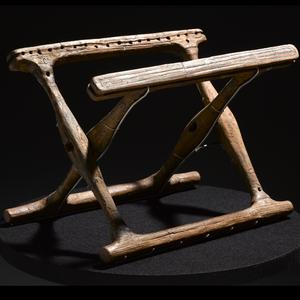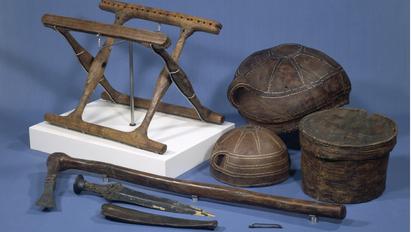An elegant seat of otter skin
Shortly after 1400 BC, a chieftain was buried in an oak coffin within a great burial mound, now called Guldhøj. The dead man was laid out in his outfit and was wrapped in a cowhide. An axe and a dagger of bronze, two wooden bowls, a wooden box, and a spoon of horn were also placed in the coffin.
In addition, a folding stool of ash wood, with a seat made of otter skin, was placed in the coffin.




Folding stools, like the one from Guldhøj, were produced in the Nordic Bronze Age, inspired by those from distance cultures. In the Mediterranean, they were symbols of power and high prestige.
In Egypt, the seat of the folding stool was often made of exquisite goatskin. In the North, the soft pelt of the otter was chosen for this purpose. Right up until modern times its skin was appreciated as the finest of furs (the otter was legally protected in Denmark from 1967). Guldhøj, near Vamdrup in Southern Jutland, was excavated by the National Museum of Denmark in 1891.
